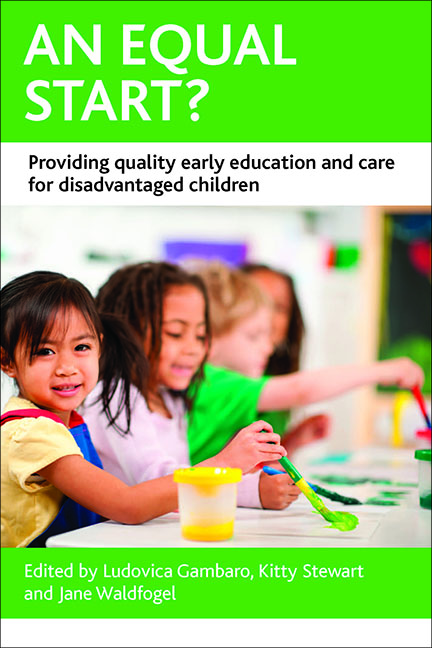Book contents
- Frontmatter
- Contents
- List of figures, tables and appendices
- Acknowledgements
- Notes on contributors
- one Introduction
- two Equal access to early childhood education and care? The case of the UK
- three Towards universal quality early childhood education and care: The Norwegian model
- four Equal access to quality care: Lessons from France on providing high-quality and affordable early childhood education and care
- five Equal access to high-quality childcare in the Netherlands
- six Access and quality issues in early childhood education and care: The case of Germany
- seven New Zealand: A narrative of shifting policy directions for early childhood education and care
- eight Early education and care in Australia: Equity in a mixed market-based system?
- nine Delivering high-quality early childhood education and care to low-income children: How well is the US doing?
- ten Common challenges, lessons for policy
- Index
three - Towards universal quality early childhood education and care: The Norwegian model
Published online by Cambridge University Press: 03 February 2022
- Frontmatter
- Contents
- List of figures, tables and appendices
- Acknowledgements
- Notes on contributors
- one Introduction
- two Equal access to early childhood education and care? The case of the UK
- three Towards universal quality early childhood education and care: The Norwegian model
- four Equal access to quality care: Lessons from France on providing high-quality and affordable early childhood education and care
- five Equal access to high-quality childcare in the Netherlands
- six Access and quality issues in early childhood education and care: The case of Germany
- seven New Zealand: A narrative of shifting policy directions for early childhood education and care
- eight Early education and care in Australia: Equity in a mixed market-based system?
- nine Delivering high-quality early childhood education and care to low-income children: How well is the US doing?
- ten Common challenges, lessons for policy
- Index
Summary
Introduction
Historically, Norwegian early childhood education and care institutions have developed from targeted services for the needy towards a universal arrangement (Ellingsæter and Gulbrandsen, 2007). Today, universal access is reflected both in that a place is institutionalised as a social right for children aged one to five, and that the great majority of children in this age group – 90% – are enrolled in services. The present model has developed gradually in a dynamic interplay of supply and demand over the past 30 to 40 years (Ellingsæter and Gulbrandsen, 2007).
Although sharing similarities with the other Scandinavian welfare states, the Norwegian model exhibits some distinctive features. Central government is responsible for funding and legal/regulatory aspects, and thus vital in ensuring the establishment and expansion of services and a relatively uniform standard. But ownership is a public–private mix, and since the mid-1970s about half of all institutions have been privately owned. Meeting parents’ demand, especially for places for children under the age of three, and the institutionalisation of childcare as a legal right, has been much slower than in the other Scandinavian countries. However, the 2000s saw concerted political commitment to expand access to services at reasonable costs for parents. Under the new condition of full coverage, policy efforts are directed at strengthening the quality of services, aimed at including all children. A particular concern is the inclusion of immigrant children and children from low-income and low educational backgrounds. This chapter outlines the main features of the Norwegian early childhood education and care (ECEC) model and addresses key policy challenges.
Major policy reforms and rationales
The Day Care Institution Act of 1975 represented the start of modern childcare services in Norway. The act stated that childcare should be a service for all parents who wanted it. Childcare thus became part of universally oriented welfare services, supported by nearly all political parties. Today's Kindergarten Act (Act No 64 of June 2005 relating to kindergartens) entered into force in January 2006. Kindergarten (barnehage) is the official and common term for early childhood education and care institutions. Here the terms ‘kindergarten’, ‘childcare services’ and ‘childcare centres’ are used interchangeably.
It has taken more than three decades to achieve ‘full coverage’, meaning the provision of places to all parents who want one for their child.
- Type
- Chapter
- Information
- An Equal Start?Providing Quality Early Education and Care for Disadvantaged Children, pp. 53 - 76Publisher: Bristol University PressPrint publication year: 2014
- 2
- Cited by



